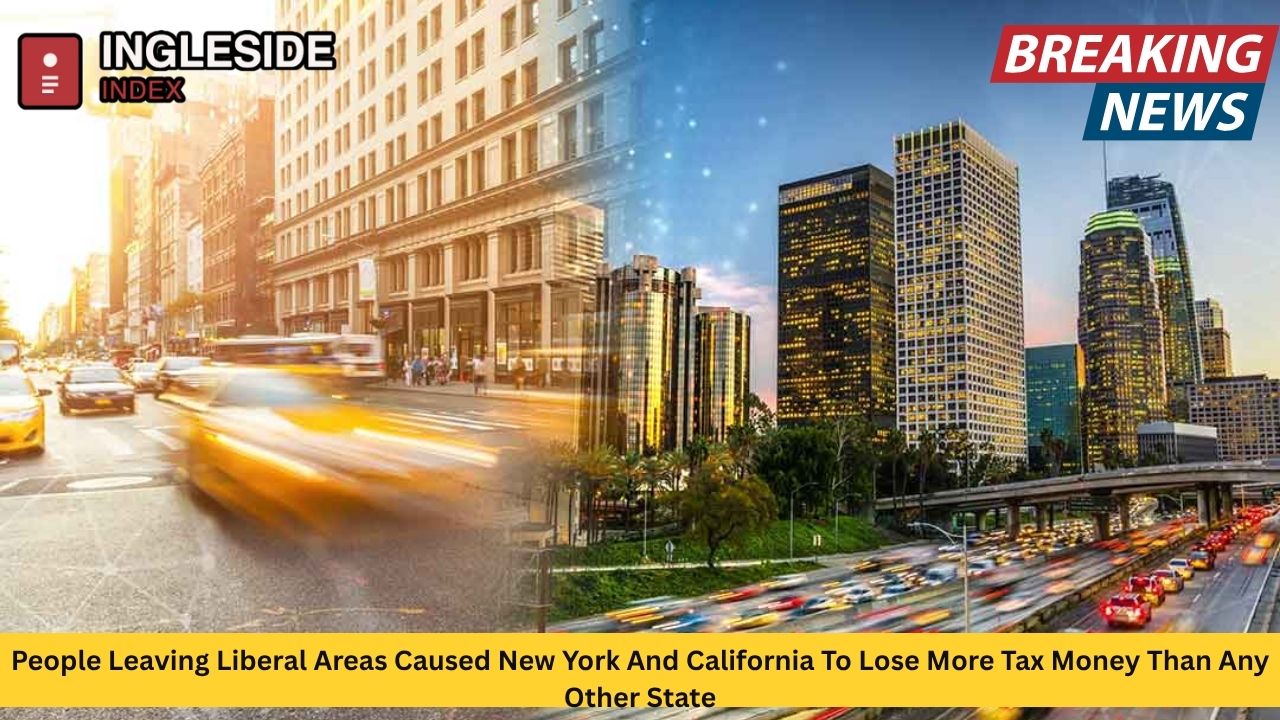In recent years, the United States has witnessed a profound reshaping of its internal migration patterns. Major cities and states known for their progressive policies—like New York and California—have seen significant population losses as residents move to lower-tax, lower-cost, and often more politically conservative states. This trend has had a dramatic impact on state tax revenues, social dynamics, and the economies of both origin and destination states.
Why Are People Leaving Liberal States?
There is no single reason for the exodus from states such as New York and California, but several recurring themes drive this mass departure:
-
High personal income and property taxes;
-
Elevated cost of living, especially in housing;
-
State and municipal policies viewed as less friendly to business and entrepreneurship;
-
Quality of life issues, including crime, congestion, and public education concerns.
While these states offer world-class cultural and economic opportunities, the cumulative burden—particularly on middle- and high-income residents—has made other regions more attractive.
Tax Revenue Loss: The Stark Reality
The fiscal implications of these migration patterns are tremendous. According to IRS migration data and various economic analyses, California and New York have lost more tax revenue from people moving out than any other states.
In 2021 alone, New York lost approximately $25 billion in adjusted gross income due to outmigration, while California experienced a staggering $29 billion loss in the same period. The departure of high-earning residents hit especially hard, as these individuals contributed disproportionately to state income tax collections.
Breaking down the numbers:
-
California lost more than $340 million in IRS-assessed state tax revenue due to outbound migration in just one recent year.
-
Over the last few years, the percentage of state tax revenue lost in California due to outmigration tripled, from about 0.5% in pre-pandemic years to 1.6% by 2022, largely because a greater share of middle- and high-income households began leaving.
-
New York’s outmigration led not only to billions in lost tax base but a dramatic shift: Residents leaving New York had, on average, incomes $17,000 higher than those moving in.
This outflow is not just about raw numbers; it’s about the changing composition of the taxpayer base. As more high-income taxpayers depart, overall state revenue faces growing pressure even if some population replacement occurs.
The Cities and States Retaining and Gaining Residents
Where are people going? The data points overwhelmingly to southern and western states. Cities like Miami, Austin, Dallas, Orlando, Phoenix, and Las Vegas are among the top destinations.
Florida and Texas have emerged as the biggest winners:
-
Florida gained $39 billion in adjusted gross income in 2021, an increase of 39% from the previous year. Nearly a third of that came from New York emigrants.
-
Texas added $11 billion in income in 2021, with $5 billion of that attributed to newcomers from California.
These destination states are generally characterized by:
-
No state income tax (Texas, Florida);
-
Lower cost of living and housing affordability;
-
Pro-business regulatory climates;
-
Warmer weather and expansive real estate opportunities.
Impact on Urban Cores and Local Economies
The loss of people and money from large liberal cities like Los Angeles, San Francisco, and New York City is not just a statistical trend—it’s altering the fabric of these urban communities.
San Francisco’s tax base shrunk by roughly 20% between 2020 and 2021, reflecting about an $8 billion income loss attributed to outbound migration. Manhattan alone lost over $16 billion in federally taxable income through net migration, equivalent to 13% of the remaining residents’ incomes. Boston, Washington D.C., and Los Angeles also rank among the hardest-hit cities.
Consequences of this exodus include:
-
Shrinking local tax bases, resulting in budgetary pressures for essential services;
-
Slower business development and declining commercial investment;
-
Decreased demand for luxury and high-end housing, putting downward pressure on real estate values;
-
Ripple effects on job growth and civic opportunities.
What Drives People Away? Voices from the Ground
Surveys and local accounts reveal a mixture of economic, political, and social reasons behind the great migration:
-
In California, 26% of very liberal individuals cited high housing costs as their main reason for considering a move, but the figure jumps to 39% among centrists and 45% among very conservative residents.
-
The average resident leaving California or New York is often a professional or entrepreneur, taking with them not only their incomes but their businesses and future contributions to the community.
Many of those who leave liberal areas also mention public policy and ideological preferences as contributing factors, seeking places with governments they view as more responsive to their values.
Demographic Shifts Across America
The ongoing migration is reshaping not just the economies but the demographics of both the states losing and gaining residents. Between 2020 and 2021 alone, California saw a net domestic outflow of about 307,000 people. New York, Illinois, New Jersey, and Massachusetts all experienced similar patterns.
By contrast, states such as Texas, North Carolina, Arizona, and South Carolina are welcoming large influxes. If you examine population changes in metropolitan statistical areas, cities like Austin and Miami have seen demographic booms reflective in their housing markets, school enrollments, and business formation rates.
Who Are the New Arrivals?
Many of the new residents moving into southern and western states are highly skilled professionals, business owners, and families seeking more space, safer neighborhoods, and a lower total tax burden. These individuals are reshaping economies through investment, job creation, and increased demand for a wide range of services and amenities.
Long-Term Impacts and the “New Normal”
While migration trends wax and wane in cycles, the recent acceleration, driven by the COVID-19 pandemic, remote work possibilities, and ongoing affordability challenges in blue states, may signal a lasting shift. If the heightened pace continues, states like California and New York could see their long-term personal income tax revenue growth fall below previous averages, restricting their ability to fund ambitious programs and infrastructure.
Destination states are now grappling with their own set of challenges: strained schools and housing stock, infrastructure demands, and cultural integration issues between long-time locals and new arrivals.
Policy Debates and Future Outlook
The exodus from liberal states like New York and California has sparked robust debates among policymakers and residents:
-
Should states with progressive taxation and robust social services adjust their tax or regulatory policies to retain affluent residents?
-
How can liberal cities make housing more affordable and their economies more competitive without sacrificing their social values?
-
What lessons can rapidly growing states draw from the challenges once faced by today’s “loser” states, in order to avoid similar patterns in the future?
While taxes are a significant driver, the future will hinge on how state and local governments respond to broad-based citizen concerns—including public safety, infrastructure, education, and opportunity. Regardless, the recent record-setting losses of people and tax revenue in New York and California have forced both states—and their major cities—to rethink their strategies in retaining and attracting residents.
Conclusion: A Decisive American Shift
The dramatic losses in tax revenue experienced by New York and California are not just an accounting problem—they mirror a larger American story about mobility, opportunity, and the desire for a better quality of life. Whether these trends persist or eventually reverse, the recent years have made it clear: the movement of people across state lines is changing the national conversation about where—and how—Americans want to live, work, and invest their futures. The impact of these migration decisions will continue to reverberate, not only through state coffers but across the economic, cultural, and political landscapes of the nation’s most influential cities and states.




